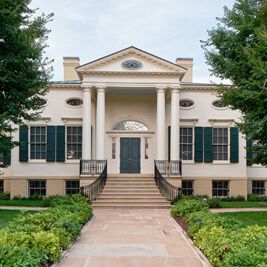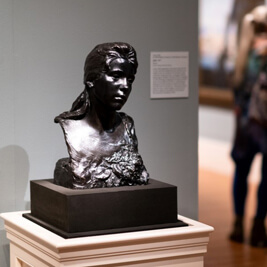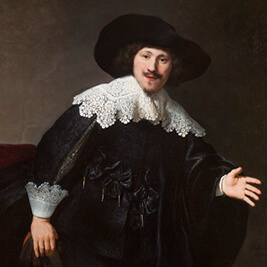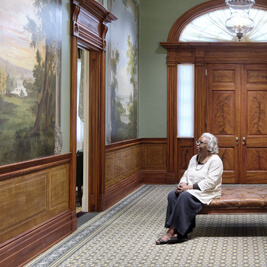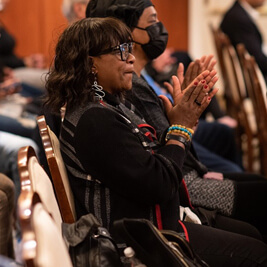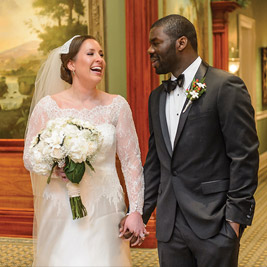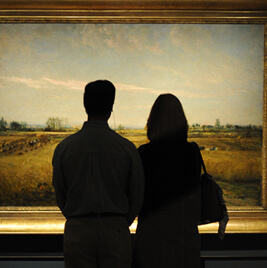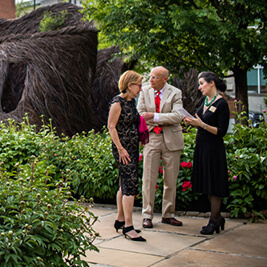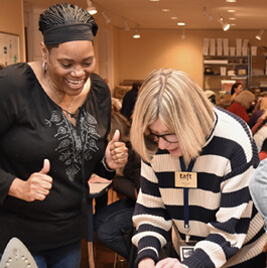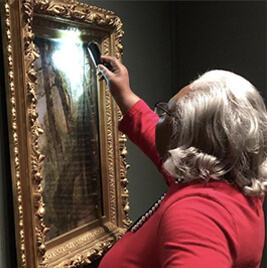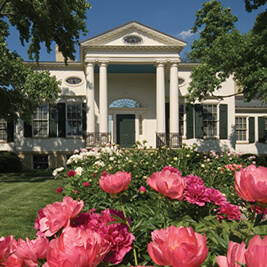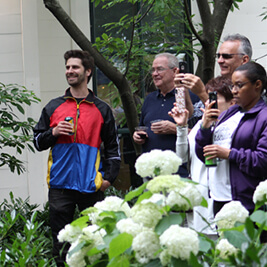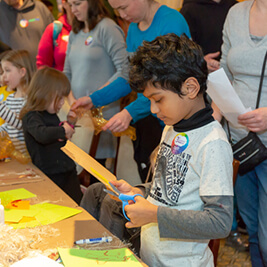- Do + See
- Dine + Host
- Give + Join
- Educate + Learn
Cincinnati and the Tafts in the 1880s
By Tamera Lenz Muente, Assistant Curator
The upcoming exhibition in the Sinton Gallery, Forgotten Cincinnati: Photographs from the 1880s, demonstrates the Queen City’s prosperity in the 1880s. In 1888, the city celebrated its 100th birthday with the Centennial Exposition, held in Music Hall and in two temporary structures built especially for the occasion. In that year, at least 6,000 manufacturers in the city employed 93,500 workers. Cincinnati was a world leader in soap production, carriage manufacturing, beer brewing, whiskey distilling, and lithographic printing. In Over-the-Rhine, hundreds of small businesses flourished, each employing a handful
of skilled craftsmen who made fine products—including musical instruments, wood carvings, and blown glass—many in the space of their own homes. The city had also become a center for the arts and art education.
During the 1880s, life on Pike Street was filled with new business ventures, friendships, and romance. Charles and Anna Taft (Charley and Annie) were in their second decade of marriage; they had wed in 1873 in the music room of Annie’s father David Sinton’s home, where the couple established their residence. The three shared the large house for nearly two decades. In 1880, Charles and his father-in-law acquired the Cincinnati Times-Star, of which Charles became editor in-chief. Just three years later, a massive fire at Sixth and Walnut streets badly damaged the Times-Star building. Fortunately, insurance covered the losses, and the paper rebounded with Charles at the helm.
In the early 1880s, the younger Taft brothers William Howard (Will) and Horace shared an apartment on Broadway, a short walk from Pike Street. They spent much time at Charley and Annie’s home, where they often dined and received guidance. During this time, the Taft brothers’ parents Alphonso and Louise Taft were living in Europe while Alphonso served on diplomatic missions under President Chester A. Arthur.
Will, the future president, began courting Helen (Nellie) Herron, who lived across the street from Charley and Annie. Nellie hosted regular Saturday night “salons,” which Will eagerly attended. Annie also organized many social gatherings, including amusing theatrical productions in which Will, Nellie, and other friends performed. Nellie remembered Pike Street as “a block of grey brick houses . . . the fashionable residence of the city. . . . [The street] runs down to the river on a rather steep incline and, as it was paved with cobblestones, my early memories are somewhat marred by an impression of the frequent clatter and clang of heavy wagons pulling their way up the hill from the river landing.” She described the two homes across from hers as “striking and imposing residences which lent distinction to the neighborhood, and in which, as I grew up, were formed the pleasantest associations of my life.”
In 1884, a major flood devastated the city. On February 14, the Ohio River crested at the unprecedented 71 feet and 3/4 inch, rising to just one block below Third and Pike streets. Because the gasworks were flooded, the city—then lit by gaslights—was plunged into darkness.
However, the Opera Festival went on as planned, and Will, Nellie, Charley, and Annie attended the Cincinnati premiere of
Giacomo Meyerbeer’s The Prophet, a four-and-a-half hour-long opera that the Cincinnati Enquirer reported “was much like the flood—there was too much of it for comfort, and people asked the same question of both: ‘Will it ever end?’” The flood also did not stop Will from courting Nellie, to whom he proposed in 1885, and married in 1886.
News accounts of the 1880s offer glimpses into the Tafts’ lives. As assistant prosecutor for Hamilton County, and later a Superior Court judge, Will’s name appeared often in the press. Charles’s political and business involvements kept his own name in the public eye. Anna appeared in society columns, one of which ended the decade with a mention of a New Year’s gathering of 70 people at her home. In 1890, Anna was listed as one of the “Prominent Matrons of Cincinnati,” and described as “a beautiful young woman, very engaging in manner and highly accomplished.” Four years earlier, the Cincinnati Enquirer had profiled her father as “Ohio’s richest man,” reporting several generous charitable contributions. The article noted that Sinton’s “only son died some years ago, so that most of his vast wealth will go to his son-in-law, C. P. Taft.” The story accurately portrayed Sinton’s background and wealth, but did not correctly identify his heir. It was his only surviving child, Annie, who inherited the vast $15 million fortune, enabling the Tafts to begin collecting art and to continue the family’s philanthropic legacy.
The author gratefully acknowledges the following sources – ProQuest Historical Newspapers: The Cincinnati Enquirer | Ishbel Ross, An American Family: The Tafts, 1678–1964, Cleveland and New York: The World Publishing Company, 1964 | Helen Herron Taft, Recollections of Full Years, New York: Dodd, Mead & Company, 1914 | Williams’ Cincinnati Directory, June 1888
